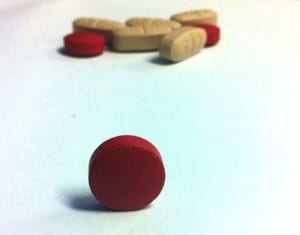Lack of funding results in minimal drug tests at varsity level

What’s stopping varsity athletes from using performance-enhancing drugs?
Article: Erica Whyte – The Ryersonian
[button style=”e.g. solid, border” size=”e.g. small, medium, big” link=”” target=””]TORONTO (CUP)[/button] — Lance Armstrong did it. Alex Rodriguez did it. Barry Bonds did it. What’s stopping varsity athletes from doing it?
Every Olympic year, major cutbacks are made to drug testing at the varsity level because of the increased testing done on Canadian Olympians and Paralympians. This year, only about one per cent of varsity athletes will undergo drug testing, because of tight budgeting and the upcoming Sochi Olympics.
Michel Belanger, the manager of communications for Canadian Interuniversity Sport (CIS), said that the Olympics put a strain on an already limited number of tests.
“Some years we have 100 (drug) tests, some years 350 tests,” said Belanger. “When it’s an Olympic year, we might not have that many tests available.”
The battle against performance-enhancing drugs is monitored at the varsity level by CIS, the national governing body for sports at Canadian universities. CIS manages 10,000 varsity athletes who are currently enrolled at 54 universities nationwide. Among other things, the CIS is responsible for administration of, and education about, drug testing.
“The only reason we don’t do more testing is money. Money is the name of the game,” Belanger said. One drug test can cost between $500 and $1,000.
Only a handful of Ryerson University’s varsity athletes have ever even been tested.
Cassandra McNichol, a women’s varsity hockey player, was one of those few athletes. “When I was tested, it was through random pick,” she said. “There was no warning for them to show up, it was a surprise.”
She claims that she’s been told CIS does random drug-testing for teams that have a large group of people who perform well, “to ensure their performance is natural,” not drug-enhanced.
Tyler Nella, a Ryerson student and former Canadian Olympian, said he was subject to multiple drug tests in the year leading up to his performance in the 2010 Vancouver Olympics.
“They’ll come test you whenever they want, without notice,” he said. “You’ll have to fill out six months in advance of exactly where you’ll be and they’ll show up. One day they came to my house at six o’clock in the morning.” Nella and his Canadian teammates were all tested at least once.
“They would come to the gym [where Canadian Olympians trained] in Calgary and pick people like ‘you,’ ‘you,’ ‘you,’ ‘you.’ Every single person gets tested,” Nella recalled. “They were so intense about it.”
Stephanie White, the associate director of athletics at Ryerson, agrees that continual testing of Olympians is necessary, but perhaps alternate, less-costly drug testing should be explored on a varsity level.
“It would be great if we had other methods to keep a more consistent testing in university sports year over year, or even test more sports,” she said. “It’s obviously a funding issue.”
[button style=”e.g. solid, border” size=”e.g. small, medium, big” link=”” target=””]Image: Brendan Kergin/Canadian University Press[/button]









